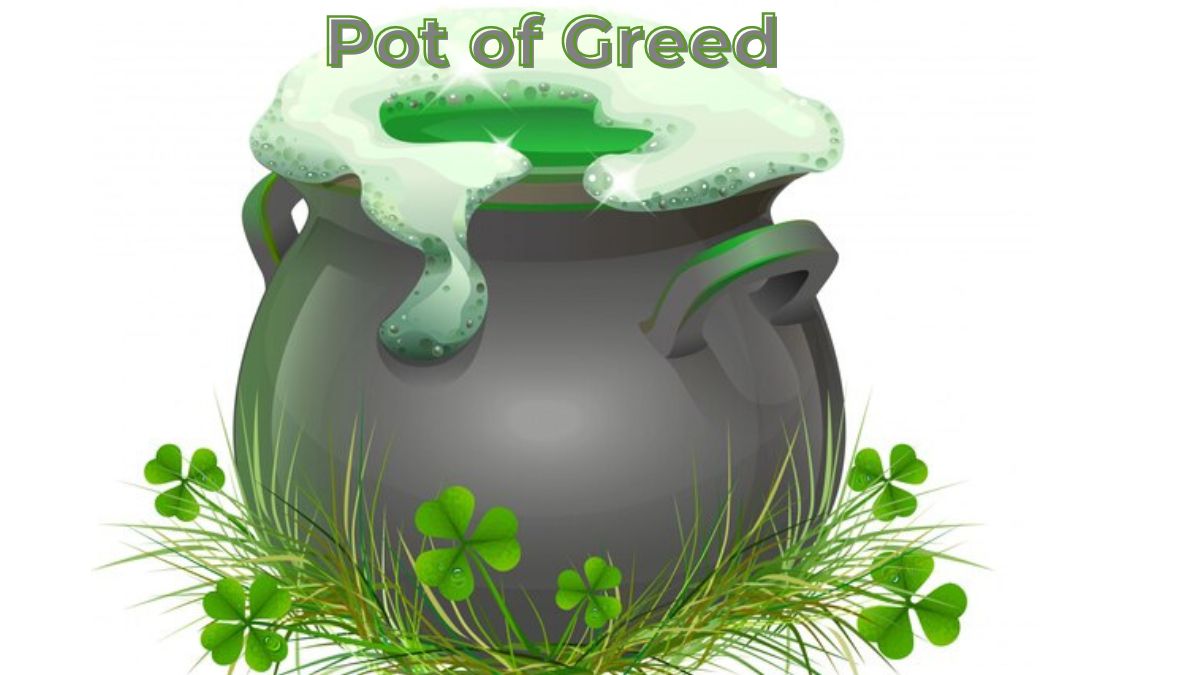When it comes to iconic cards in the trading card game (TCG) universe, few can rival Pot of Greed. This unassuming green jar has sparked debates, fueled strategies, and left a lasting mark on players worldwide. But what is it about this simple card that makes it so powerful? For many seasoned duelists and newcomers alike, understanding Pot of Greed is key to mastering deck-building tactics.
In this blog post, we’ll delve into the fascinating history behind Pot of Greed, explore its controversial nature, and reveal tips for utilizing its potential effectively. Get ready to unlock the secrets of one of TCG’s most notorious cards!
The History of Pot of Greed in the Trading Card Game World
Pot of Greed first made its debut in the Yu-Gi-Oh! Trading Card Game back in 2002. Instantly, it captured the attention of players across the globe.
Its simple effect allowed users to draw two cards without any cost or downside. This unparalleled advantage changed gameplay dynamics forever.
As players began to realize the card’s potential, Pot of Greed swiftly became a staple in competitive decks. Its ability to provide immediate resources shifted strategies and created new meta-game trends.
However, as with many powerful cards, its popularity bred controversy. Players called for bans due to its overwhelming impact on fair play and balance within matches.
In just a few years after its release, Pot of Greed was officially banned from tournament play. Yet, it remains an enduring symbol of power within TCG history—a reminder that some cards can redefine what’s possible.
The Controversy Surrounding Pot of Greed
Pot of Greed has stirred heated debates ever since its inception. Many fans argue that its ability to draw two cards for no cost is simply too powerful. This sentiment has led to calls for bans and restrictions in various formats.
Critics see it as a game-changer, offering players an unfair advantage right from the start. They feel that such power can overshadow skillful play, turning strategy into mere luck.
On the flip side, supporters believe it fosters creativity and fast-paced gameplay. It encourages players to build dynamic decks that capitalize on drawing extra cards quickly.
The discussions surrounding Pot of Greed often reflect broader themes within trading card games: balance versus chaos, risk versus reward. As new generations of players join the community, these conversations continue to evolve and shape future gameplay experiences.
How to Use Pot of Greed Effectively in TCG Gameplay
Using Pot of Greed effectively can turn the tide in your favor. This card allows you to draw two additional cards, providing a significant boost to your hand.
Timing is essential when playing this card. Use it when your resources are low or just before executing a combo that requires multiple cards. This strategy maximizes its impact.
Consider synergy with other cards in your deck. Pairing Pot of Greed with draw engines can set up powerful plays and keep your momentum going through the game.
Don’t overlook the importance of knowing when to hold back on playing it until later turns if necessary. Sometimes waiting for the right moment makes all the difference.
Track what you’ve drawn and plan ahead, as drawing extra cards could lead you closer to winning combos while keeping opponents guessing about your next move.
Alternatives to Pot of Greed and Their Effect on the Game
While Pot of Greed offers unparalleled draw power, several alternatives can also enhance your deck’s performance. Cards like Graceful Charity allow players to draw cards while managing their hand size. This balance helps maintain card advantage without the overwhelming impact of Pot.
Another option is Card Destruction, which forces both players to discard and then draw new cards. This adds an element of randomness and strategy that can shift the game dynamics significantly.
For those seeking a more tactical approach, Upstart Goblin provides a safe one-card draw solution while giving up a modest life point. Its synergy with certain archetypes can lead to explosive turns when timed correctly.
Each alternative has its own strengths and weaknesses, allowing players to tailor their strategies based on personal play style or specific matchups in the ever-evolving TCG landscape.
The Impact of Pot of Greed on the TCG Community
The introduction of Pot of Greed sent shockwaves through the trading card game community. Players quickly recognized its unparalleled power, leading to a surge in deck strategies centered around drawing cards.
Competitions became intense. Tournaments saw players scrambling to include this coveted card, forever changing gameplay dynamics. The thrill of an unexpected draw could dictate a match’s outcome, creating fierce rivalries and unforgettable moments.
However, the card also sparked debates about balance and fairness. Many felt it disrupted the game’s integrity. Discussions over banning or limiting its use ignited passionate conversations among fans.
Communities formed around strategies that incorporated or countered Pot of Greed. Forums buzzed with ideas on how best to leverage its potential while navigating challenges posed by opponents eager to exploit weaknesses.
Its legacy continues today as newer generations discover both its allure and controversies. This single card has woven itself into the fabric of trading card culture in profound ways.
Conclusion
Pot of Greed remains one of the most Polarizing cards in trading card game history. Its ability to draw two additional cards for a mere cost of nothing has left an indelible mark on gameplay strategies.
Players still debate its merits even years after its initial ban.
The discussions surrounding Pot of Greed spark creativity, pushing players to think outside traditional decks and consider alternative strategies.
As the TCG community evolves, so do the opinions about this infamous card. Whether you’re a fan or detractor, it’s clear that Pot of Greed will forever be etched into gaming lore.
Its influence continues to shape deck-building choices and overall game dynamics across various formats. The legacy is undeniable; it prompts questions about balance, fairness, and innovation within competitive play.

 Uncategorized3 months ago
Uncategorized3 months ago
 Uncategorized7 months ago
Uncategorized7 months ago
 Uncategorized4 months ago
Uncategorized4 months ago
 Uncategorized4 months ago
Uncategorized4 months ago










